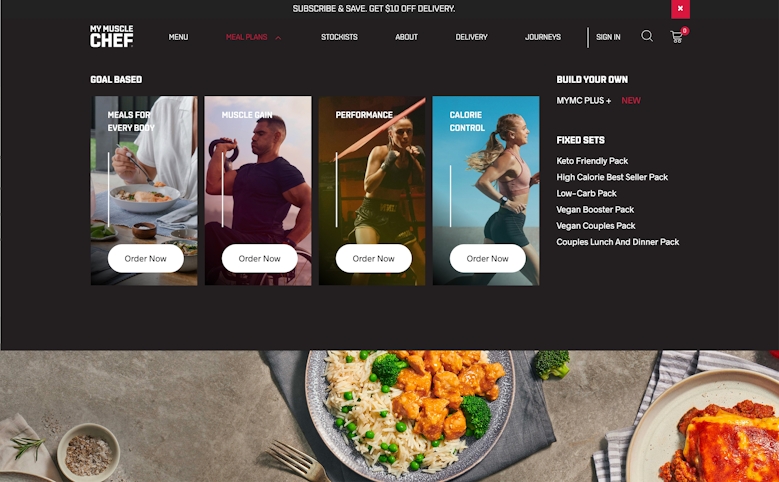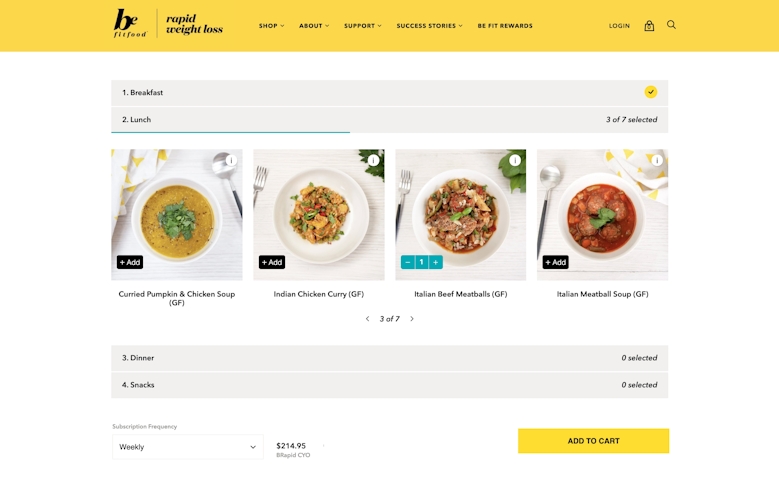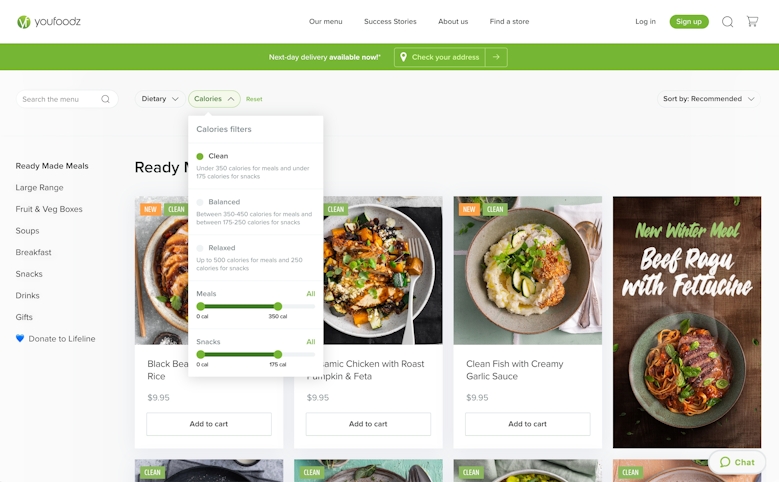How new entrants can succeed in the growing market of food subscriptions & meal delivery services
Published: 3 July 2020
Food subscription and meal delivery brands are the ultimate symbol of convenience and are in full force today — estimated to reach $3.5 billion in Australia by 2024, and $200 billion globally by 2025. Even before COVID-19 became a grim reality, the industry was growing at a rapid pace.
Many consumers opted for food delivery because they wanted to avoid or weren’t allowed to go to the supermarket. This change in consumer behaviour has accelerated the adoption of buying groceries and food online, which has led to promising growth predictions of the industry in general.
This has been good news for the brands who were already ahead of the food delivery game, but what about those who are trying to enter or scale in this opportunistic market?
It’s a huge opportunity and the market is growing, however there are complexities to consider when starting a subscription business. It costs money to acquire new customers and it’s hard to keep them. COVID-19 has given a boost to existing food subscription and meal delivery services, making it an even more attractive business model.
While there are challenges to entering the market, there is a technology and implementation path to overcoming them – powered by Shopify and its ecosystem. We’re going to talk more about what this looks like, and discuss the parts of your business you should be focusing on in order to succeed in this industry.
Best practices of subscription implementation
Consumers demand quality, convenience and good value, which can be hard to execute all at once. Subscription models are also notorious for high churn which increases customer acquisition costs. Broadly speaking, a great subscription implementation is all about reducing friction and the onus on the customer.
But what does a friction-free experience look like for the customer?
- Allowing them to make final decisions at cart and checkout quickly and easily.
- Remembering their details and what they have purchased before, so they can quickly reorder next time.
- Implementing an authentication method to allow your customer to opt in to having their payment details remembered and don’t have to keep re-entering them.
- Providing a fantastic UX that allows them to build a cart for subscription and allow them to come back at any time and edit that cart. Add things, remove things, swap things in and out in a way that is frictionless.
- Delighting customers with empathetic UX, such as allowing a customer to pause a subscription while they go on holidays, or if they need a break, giving them the option to pause. Most importantly, you should remember that the customer is in this paused state and adjust your marketing to them in a way that makes sense (e.g if they’ve been on holiday – Hope you had a good holiday! Time to get back into your subscription?).
- It’s also about being able to anticipate when a customer is going to churn and change up how you speak to them. Suggest making a change to their subscription or ‘mix things up’ to prevent them from churning.
The bare minimum of subscription implementation best practices need to be met to survive, but to truly succeed in this industry — you need to focus on how you’re going to be keeping those acquired customers through personalisation, product innovation and a better user experience.
We’ll get into more of the specifics of these below.
Product innovation
Product innovation has come a long way in the food delivery space. Fresh food can be delivered to someone's house within a matter of hours on the back of a truck — without being frozen.
Not to mention, a ready-to-eat-meal from Youfoodz can be kept in your fridge for 6 to 9 days (this is how they do it). The TL;DR of it is that Youfoodz uses Modified Atmosphere Packaging (MAP), which removes the oxygen out of the meal containers to keep them fresh for as long as is naturally possible.
And of course, how you innovate — your processes, product and service — is also dependent on your business model.
There are two main models of online food delivery:
- The box model: We see it often with organic sellers. A box of fresh fruit and vegetables — sometimes offering upgrades for milk, bread and other essentials.
- The subscription model: While the box model can work as a subscription, the main difference between the two is that this model relies on offering more personalisation. Customers have the option to curate their weekly delivery, depending on their personal tastes and lifestyle preferences (i.e doing a low carb week).
Product innovation is a challenge, no matter what industry you’re in. Within the food delivery industry, a lot of success in innovation is attributed to the concept of hyper-convenience.
This means the customer is able to:
- Order easily and quickly, using whatever device suits them at the time.
- Have the option to choose a delivery window that’s convenient for them.
- Make the first delivery of the subscription as soon as possible.
- Design a menu for the week that suits their personal taste and lifestyle. Or if you’re using the box model, they can easily add/swap out food items.
- Easily manage their account and have the option to start and stop whenever they want.
For new entrants, it’s important to think about how you’re going to deliver on convenience within your business model. However if you’re not winning on convenience, you have to go above and beyond to sell a more personalised product.
Personalisation & taste
When customers are comparing providers, we can’t forget that a big part of the decision-making process is what food they’ll get. Meal selection is very personal and customers’ tastes change — they get sick of having the same meals, they decide to go on a diet or want to make some lifestyle changes.
Part of this is to provide flexibility in how customers can plan their meals each week, or design your product offering in a way that targets customers looking to make lifestyle changes, or to go on a particular diet.
Food subscription businesses have become more savvy with how to best market to customers, based on taste and circumstance. Take Muscle Chef 01 for example — a business focused on product quality and tailoring high-protein meal plans to achieve specific muscle gain and performance goals.
Customers make their journey to cart via three preferences:
- Goal based: Helps you build out a meal plan that will help you achieve your goal, based on how often you work out and your gender. You can choose what snacks you’d like and whether you want to add in particular snacks or breakfast meals. You have limited options on what types of meals you can rotate, but that is restrictive by design. It’s about making sure the customer achieves their goal.
- Build your own (Mix and Match): Offers flexibility when customising the meals for the week. This is based on the customer’s specific macros and giving them the option to choose which protein, carb and vegetables they want.
- Fixed sets: This option is targeted to people who might be interested in trying out a new lifestyle or diet but aren’t interested in all the meal plan tinkering.
What Muscle Chef has done well here is they have managed to target very specific audiences with their product offering, with the right balance of personalisation.
Be Fit Food 02 is another great example of a food delivery and subscription business that recognises meal plans should be highly customisable to match changing taste preferences. They provide an easy add-to-cart experience where users can choose from multiple meals to customise their meal plan.
Additionally, one of their key points of difference is allowing customers to book in a 15 minute phone consultation with a dietician to discuss specifics around their weight loss journey.
Youfoodz takes a slightly different approach with their Meal Planner personalisation, which is a good example of leveraging Shopify under the hood to deliver a full-featured user experience.
Customers can filter their search based on specific dietary requirements (i.e nut allergy or gluten free) and by calorie count.
Those at the top of their game in personalisation are using a CDP (customer data platform) to build a taste profile for particular customers, and are marketing to those customers according to their taste. This goes beyond what most companies have but a well-utilised CDP is entirely a game–changer. It allows brands to store both structured data (names, emails, phone numbers etc) as well as unstructured data (whether the customer has started choosing lower carb meals, or changed their calorie count etc) together to draw insights from. Using a CDP, you will be able to track how your customers’ tastes and their lifestyles change over time. This would mean you can anticipate what those customers might want to eat at that particular point in time, and connect with them to make that suggestion.
Checkout customisation
The goal of any checkout is to keep people in the funnel all the way through to the end. It’s an important focus area for any eCommerce business as speed and accessibility is critical in order to encourage customers to checkout quickly.
The concept of Shopify’s one-click checkout (also known as accelerated checkout) is the ability to remember the customer’s payment details, and giving them the option to enable or disable that functionality. If this feature is enabled, it allows returning customers to quickly complete payment for their orders.
The Shopify checkout is designed to do that, it’s hyper optimised and converts very well — which also explains why it’s restrictive by design. However, it does give some flexibility with allowing customers to put in specific parts of business functionality that is required to achieve better UX.
For example — one of the key things for Youfoodz 03 and their customer journey was being able to identify the geographic location of their customers while in checkout to personalise delivery options.
Part of Youfoodz’s checkout process is asking the customer for their postcode, which then prompts the customer to select a delivery window based on their postcode.
This small aspect of the checkout process is part of a much bigger logistical picture. With that said, Youfoodz has excellent logistics, offering many delivery windows which can be selected at the start of the funnel as you enter the cart, and modified after you’ve entered the checkout.
To recap
Convenience is a uniting factor in food subscriptions and meal delivery, but it’s not strictly the deciding factor when it comes to being successful or not. You have to take the whole user experience into consideration and know how to best market to your customers, based on taste and circumstance. Succeeding in this industry is not about reinventing the entire game — it is about choosing the right mix of tactics that will help keep you in it.



Are you ready to 10x your brand value?
Enter your details and we’ll be in touch to show you how